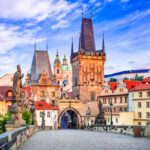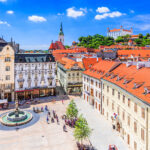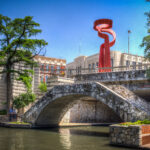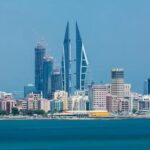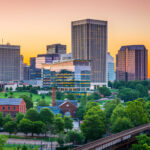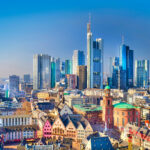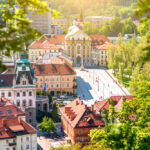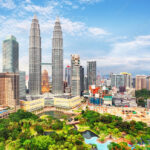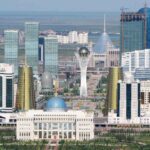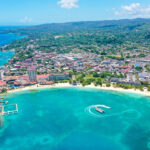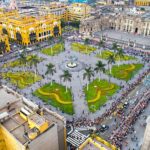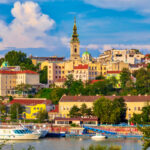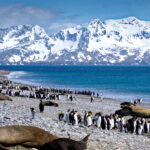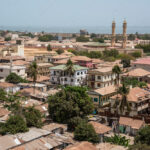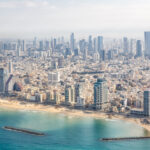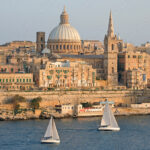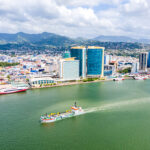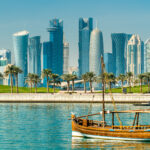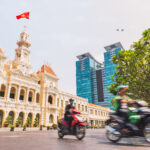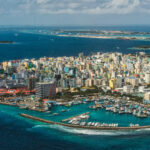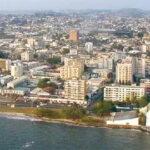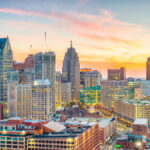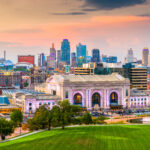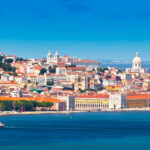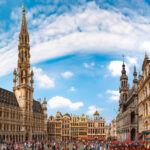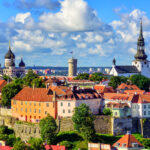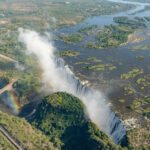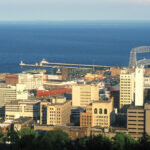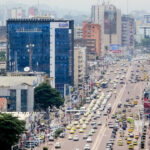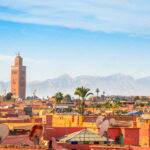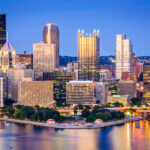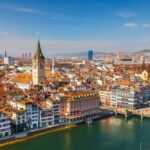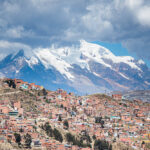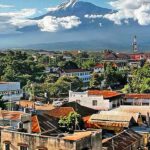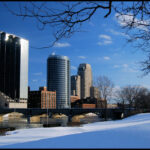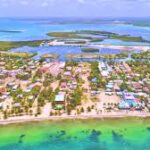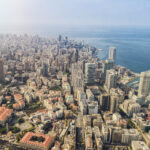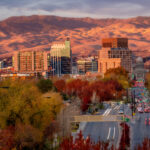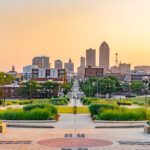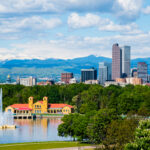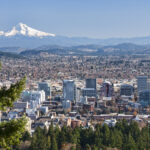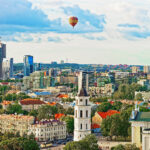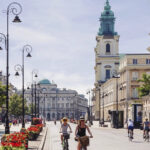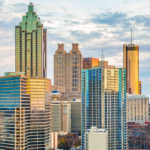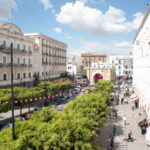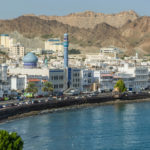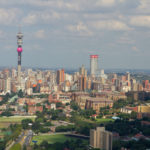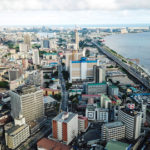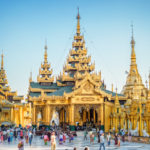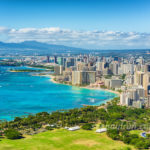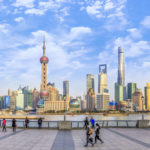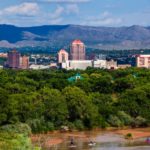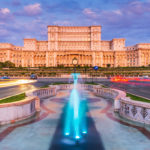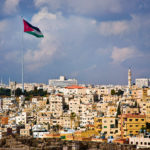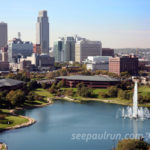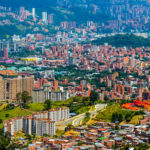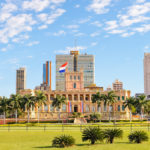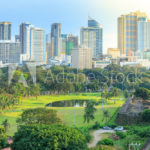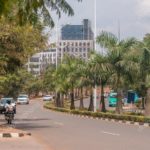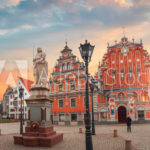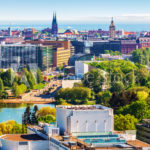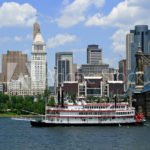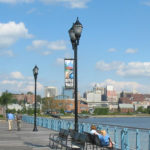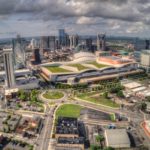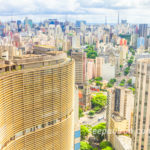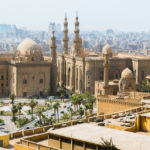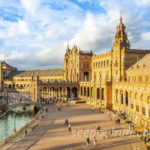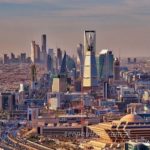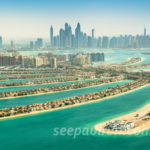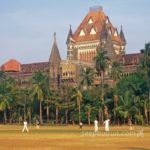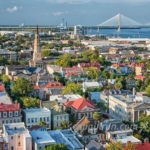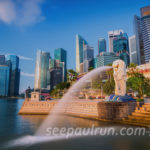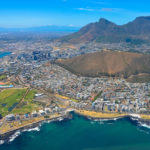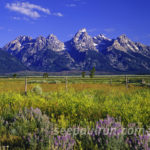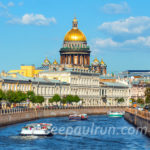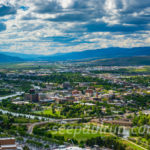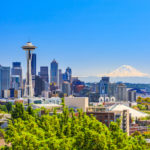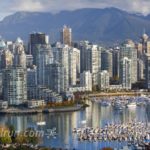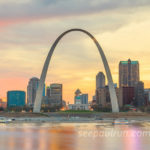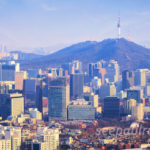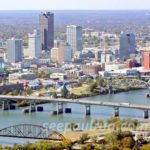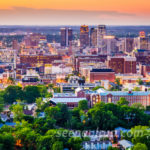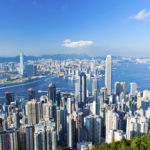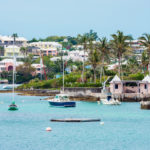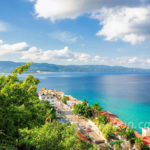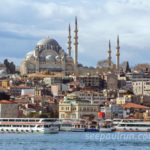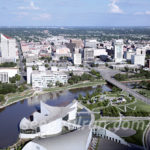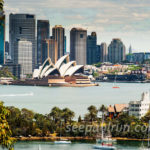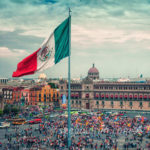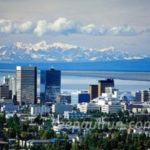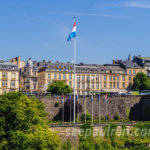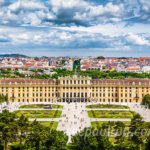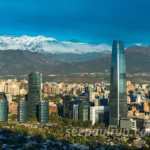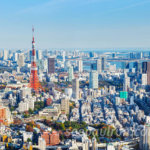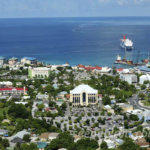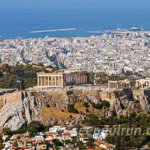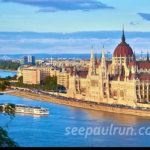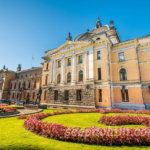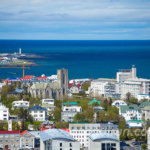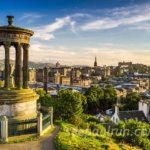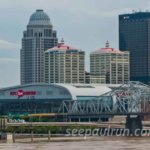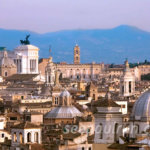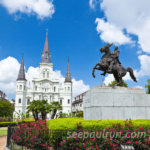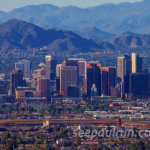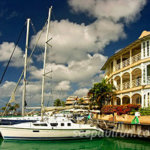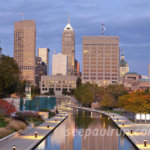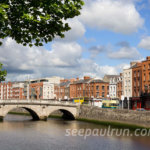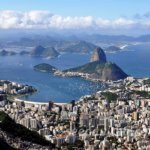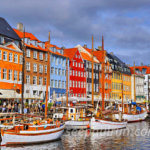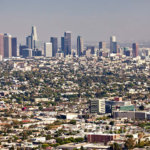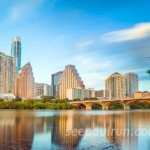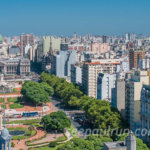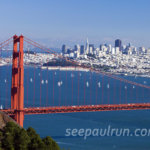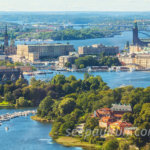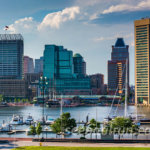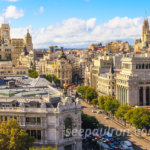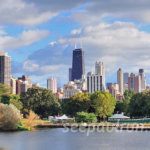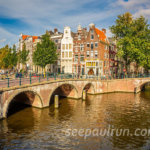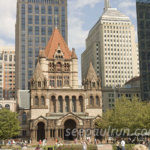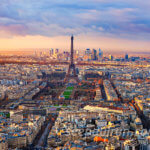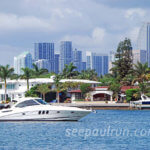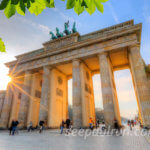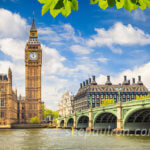IN BRIEF:
Like everything in dynamic, chaotic Mexico City itself, the Mexico City Marathon is a bit, well…complicated. In both, there is great beauty, enjoyment, and lots of interesting things to experience, but with each also comes the constant push-pull feelings of deficiency, aggravation, and unsettling disorder.
THE PLACE:
Let’s start with the city itself. In my experience, Mexico City is the kind of place that visitors either learn to love or, let’s just say, to not love very much.
As a massive me tropolis with a population of 21.3 million, Mexico City (or in Spanish, Ciudad de Mexico, and now abbreviated as CDMX) is the largest metropolitan area in the Western Hemisphere, with more than its usual share of any metropolis’ urban sprawl, income disparity, government and police corruption, dangerous crime, and severe environmental issues.
tropolis with a population of 21.3 million, Mexico City (or in Spanish, Ciudad de Mexico, and now abbreviated as CDMX) is the largest metropolitan area in the Western Hemisphere, with more than its usual share of any metropolis’ urban sprawl, income disparity, government and police corruption, dangerous crime, and severe environmental issues.
It’s a city of massive contrasts, to be sure: a city of grand avenues, parks, and fountains, but a city with Third World poverty, a noticeable almost-military-state-like–police presence, and ubiquitous smog; a place with perfume-scented boutiques and hotel lobbies all within a stone’s throw from sewage-stinking alleys and graffiti-covered buildings; a place of obnoxious wealth and gleaming glass towers set among labyrinthine streets, workaday slums, and soul-killing traffic jams.
Fans of the city who are not native-born–having spent time here getting to know particular neighborhoods, perhaps as university students, or as upwardly mobile executives, or maybe as hipster expats living out some lifestyle escape–are apparently not bothered by these contrasts because the city’s sheer geographical size partitions their energies into other attractions, such as its burgeoning food and arts scene, plentiful museums and historical sites, progressive politics, and vibrant youth culture and nightlife.




But even as recent acclaim from outsiders, such as in 2016 when the New York Times ranked it as the #1 Travel Destination of the Year, has suddenly pushed Mexico City into a kind of “flavor of the moment” spotlight, this city of messy extremes, in my humble opinion, may still not be ready for its close-up, and as such, does not always live up to its overly-hyped reputation.
And so it was, despite having been here before, that my second trip to Mexico City in more than a decade was in some ways to see what all of that recent acclaim was about. As a former urban planner, I can admit that I actually do appreciate and respect the workings of Mexico City. I marvel at its functional survival and the imperturbable face it puts on for show. But I cannot honestly say that I have yet been won over as one of its warmest fans.
I don’t think that I am alone in this. There seem to be plenty of others who come away from a trip to the city with more than a little disappointment. Leaving aside the far extremes, where there are some Mexicans themselves from any one of the country’s diverse 31 states who look for nothing more than validation in their scorn for the capital’s immensity and snobbishness, there are many visitors who come with the highest expectations, who put up with the often miserable taxi ride from the airport to their hotel (there is no other way), who brave the streets and the pollution and put on blinders just to see the nicer areas and the excellent museums. There are business people who fly into corporate meetings, and tourists who land here as part of a multi-part trip, en route to charming towns, ruins, or seaside resorts further inside Mexico. And there are a few, like me, who make the trip to see the city’s progress while partaking in its marathon.


On the one hand, I’ll admit that it’s a fascinating place, built on a 7,200 foot high (2,250 meters) valley plateau, which was once a man-made island at the center of a vast inland lake system. The Aztecs founded the original city of Tenochtitlan here in 1325 and grew and flourished until the Spanish conquest in 1521 destroyed their civilization’s most important hub. The Spanish rebuilt their capital of New Spain on the same site–cruelly forcing the natives to tear down their religious temples as material to build up the Spaniard’s own stone cathedral and government palaces on the same spot–and ruled Spain’s New World Empire from the city. Although, after independence from Spain, Mexico City became the capital of the new sovereign country of Mexico in 1821, at the heart of the old city and the massive European-style plaza known as El Zócalo (a.k.a. Plaza de la Constitución), much of its colonial splendor, as well as the unearthed ruins of the Aztec world beneath it, can still be seen today by today’s tourists.




Fast forward and the Mexico City that was to expand in all directions from that ancient center, gradually added gracious neighborhoods for the wealthy next to landscaped avenues and parks, middle class neighborhoods of artists and craftsmen with their cantinas and markets, and multiple business districts that make Mexico City today one of the most important banking, media, and economic hubs in the world. In recent years, it has also became one of Latin America’s most progressive cities, with legalized same-sex marriage and a powerful feminist movement. Some 6.3 million foreigners also visit the city each year, in addition to it being home to largest group of U.S. expatriates and retirees (some 700,000) in the world.




But impressive as all of that sounds, Mexico City can also be something of an urban nightmare. It’s sprawling and overcrowded, eternally facing water shortages, badly polluted, and–as it was built on that aforementioned lake–is steadily sinking into the soft soil in some places at a rate of 9 inches (22.8 cm) per year. Its traffic is often gridlocked for miles in all directions with only the piercing whistles of an army of traffic cops urging its slow untangling. Its sidewalks are in many places broken and hazardous to walk along, and in some neighborhoods, low-hanging, jerry-rigged electric wires swoop and dangle over streets filled with vendors hawking food, and clothes, and whatever else which might be sold for a few pesos in the informal economy.
The last time I was here, I spent several days with a Mexican-born friend touring the city and its wealth of museums. I found it to be interesting enough, but this time around, I came hoping to find that emotional excitement I thought I’d missed.
I still could not find it, however. Instead, I ended up coming to a personal observation that in addition to all of its physical problems, Mexico City may still be suffering from the uncomfortable social and economic tug-of-war waged between its upscale parts with a global outlook, and those elements that are for all intents and purposes still stuck in various degrees of Third World mentality.
Like other Latin American cultural capitals burdened with corruption and danger (Rio de Janeiro, São Paulo, or Medellin, for example), as well as those with a history of political problems (Buenos Aires, Santiago, and even as this is being written, Caracas), Mexico City retains an uneasy recent memory of the same. However, while much can be said of the redeeming factors of those other cities–the polished neatness of Santiago, the creative European elegance of Buenos Aires, or the easy-going flair of Rio’s Carioca locals–Mexico’s capital to me simply does not offer a viable comparison. Nothing inside of the megalopolis sets it apart to draw in visitors other than its past and present symbols of power and a not-always-easy-to-spot cultural scene. I’m being harsh here, I know, but that has a lot to do with the rave reviews that premature promise of a new stature for Mexico City as equal to the world’s greatest cities, as a European Chicago or a New World Barcelona. But in my opinion, it’s simply not there…yet.
True, there are plenty of things to do for the visitor who has lots of energy and the patience to put up with crowded subways or snail-paced traffic to get anywhere. You can easily spend at least 4-5 days taking in the sights: the wonders of the massive Cathedral Metropolitana, the impressive National Palace with its murals by Diego Rivera, the grand Palace of Fine Arts and the National Post Office, the ruins of the Aztec Templo Mayor, the peaceful Chapultepec Park with its elegant 19th Century Castle, and the one-of-its-kind National Museum of Anthropology. All the while, you can sample the city’s colorful traditional and nouveau food cultures, as well as a trendy bar scene, and you can find surprises along the way from old-fashioned candy stores and organ grinders on the street to strolling mariachi musicians and kids playing in pop-up chess tournaments. As with any great city, especially one in which the culture is so often prone to living life outdoors in public squares and parks, there are delightful surprises and an abundance of diversity around every corner.






But ultimately, Mexico City runs the risk of coming off as just a big city with interesting things too often buried deep inside multiple layers of heavily frustrating urban challenges. It may always serve as an aspirational place of opportunity and success within its own culture, I am sure, but for me, it does not yet rise to expectations as a compelling world city which its history, wealth, and population demand that it probably should be.
THE RACE:
Not surprisingly, the Mexico City Marathon suffers from the same complicated contrasts, and just when you think you love it, something happens to remind you of why you might not be ready to give it that love.
In theory, it certainly seems nice. Besides the appeal of seeing one of the world’s largest cities, the marathon is run in late August at a time of year when very few marathon events are held. Because of the city’s high altitude, it promises mild, almost spring-like temperatures. The course is fairly flat. Crowd support is known to be good. The race route follows a version of the 1968 Olympic Marathon course that traverses some of the city’s most beautiful thoroughfares, past monuments and through parks, and since the event is a marathon only (with none of the typical distractions of a concurrent half marathon or marathon relay), every runner on the packed course is moving along with the same goal.


While all of this turns out to be true, however, if you’ve been following along with my review of the city thus far, you won’t be surprised to learn that–this being Mexico City–nothing in the marathon itself probably happens without a catch.
Let’s start with that altitude issue. This is not, of course, the fault of the organizers. It’s just geography. But running a marathon at 7,382 feet (2,250 meters) high, while nothing like running in the Rockies or the Alps, still presents a challenge when you’re used to running in low-lying areas of the world, like say where I run along the river in New York City (only 5-7 feet (2 meters) above sea level).
Add to this the fact that August is the rainy season in Mexico City when every day one can expect a violent thunderstorm to suddenly appear and drench the city streets in minor floods. While this, thankfully, was not something which occurred during this year’s marathon, both the weather forecast and witnessing those storms firsthand throughout the weekend were all but encouraging about how near certain the odds were that one would definitely be soaked during the race – a threat that persisted right up until a few hours before the event, without actually happening.


While these issues are relatively minor and have nothing to do with the organizers’ skill at hosting what they tout as the world’s 9th largest marathon with 30,000 registered runners, the warning signs that there would be problems in this race came up first at the expo and bib number pick-up.
With no instructions in either Spanish or English regarding how to get to the expo on the organizer’s website, my hotel’s concierge also seemed perplexed as to where the Ciudad Deportiva expo was located, and so suggested a 30-minute cab ride. Even though it was Saturday morning, and I had left an hour ahead of time to get there prior to the opening at 10:00 AM, the heavy traffic was like nothing I had ever seen. We got to the vicinity of the expo, but as the cab driver could not find a way to cross the jammed road and circled around the block for at least 15 minutes, the “30-minute” ride turned into about an hour and fifteen-minute ordeal by the time I’d entered the complex.
With so much time lost just in getting there, I guess I should have known that any ambition to get in, get my runner’s packet, and get out quickly, was also probably doomed from the start. There was no signage, so one had to join in a river of people for about a half mile, walking through an obstacle course of parking lots, stadium ramps, and lines of merchandising tents, to the number pick-up area where no one–I mean absolutely no one working there–could explain in either English or Spanish a solution to the concern of how visiting runners might get back from the finish line located roughly 11 miles (19.2 km) away from the center of town where most of our hotels were located.




As it turned out, my suspicions from looking at the incomplete website for months before had been confirmed: with no metro station within a several mile radius, and no shuttle buses of any kind, the organizers really had not considered any provisions of transport at all for visiting out-of-town runners to get back into town from the marathon’s remotely-located finish line.
Finally, after an hour of being stuck in really bad crowding just to get out of the expo, I realized there was actually a subway station adjacent to the complex (why couldn’t the race website have pointed that out, since even my hotel did not know about this?) and I took a grimy 45-minute subway ride back into town. Even with no expo shopping, the trip to and from there had become a total, unnecessary time sink costing me no less than 3.5 hours which should have been better spent seeing the city.
Next, no pasta party and a website that was inaccessible for the rest of the day and evening (due, they said, to a consistent server error), meant no communication channel to get updates foretelling the next surprise: the moving of the 7:15 AM Starting Area to a new location at the very last minute!
In fact, early on Sunday morning, as I walked (because, guess what? the subway did not open that day until 7:00 AM) heading towards the published starting area in front of the Hemiciclo a Benito Juarez monument along the Alameda Park, I was struck by how many thousands of runners I saw–yes, thousands– hurrying towards me in the opposite direction. When I and few other runners finally arrived at what was supposed to be the starting area, there was no sign re-directing us, just an irritable policeman who told us that the start was now in “that direction”.


“That direction” ended up being more than a mile away (1.6 km) from the park, along the Avenida 20 de Noviembre just south of the Zócalo. But even as we frantically rushed down to the other area to get into our corrals, we realized that there was maybe no need to hurry. The race was supposed to start for non-elite runners at 7:15 AM, yet after several comical starting countdowns from 10 down to 1 to “Vamanos”, nothing happened and still, no one moved until 7:38 by my watch.


Still, since this is Mexico City with that passive/aggressive, love/hate thing constantly smacking you down, it was easy to forgive all of this disorganization because soon things grew charming again with a series of beautifully-played anthems and folk songs broadcast over the loudspeakers, in a live performance by a symphonic orchestra up ahead in the Zócalo where the new starting line was (see video with sound below).
It was also easy to be lulled back into a (temporary) fondness for this race after it began. Like many Latin American marathons I’ve seen, during which the participants often wear the free event jersey as though it were the required uniform for marathon day, the streets were filled with a lovely ribbon of the blood-orange colored shirts worn by thousands of runners. The temperature was a mild 65-70 degrees Fahrenheit (21 Celsius), and the scenery out of the old historic district led way onto pretty tree-lined avenues, where soon thereafter, the sidelines were bursting with enthusiastic fans.


But this pleasantness was not meant to last. It was at a certain point, around mile 5 (8 km) or so, where I began to realize in horror that this race would be offering virtually no toilets on the course. Since the course maps in both the glossy, published event booklet and on the organizers’ website displayed no mile/km markings (another example of “how does something like that happen?”), much less any markings for water stops, medical tents, or food areas, there had been no way for runners to know ahead of time where to even expect a port-a-potty rest stop.



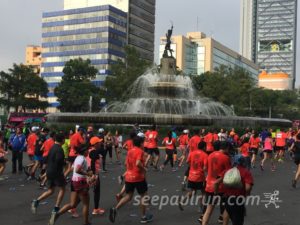
Yes, as crazy as it might seem for an event with over 30,000 full marathon runners, the organizers had chosen to provide only (by my count) three toilet areas along the entire 26.2 mile (42 km) course. None of those, as mentioned, had been identified on any map so that you could be assured that relief would be coming at any given point on the course, and all of the areas offered only a dozen port-a-potties with long lines of up to 40 runners losing valuable time waiting for access.
This careless lack of foresight (or just plain unwillingness to spend any money) on the part of the organizers forced many of us to do the unthinkable in any other major marathon: to leave the course to find a Starbucks somewhere off in the nearby streets, where we got in line behind other desperate runners whose embarrassment was matched only by their anxious suffering from “holding it in” on the course for an hour or more, having had no idea of where to expect a rest area on the unmarked course route.
But as long as you could survive those indignities, the course offered some nice scenery and very helpful volunteers. Unlike the toilet situation, there were actually plenty of water and Gatorade stations, with locals handing out or sometimes happily tossing 350 ml sealed bags of water (read: safe to drink for foreigners) as you passed.


Overall, the route was pleasant enough, moving through the Cuauhtémoc neighborhood, up and down the Paseo de la Reforma, past the famous Ángel de la Independencia and the Fuente de la Diana Cazadora. It went up into the tony Polanco neighborhood, and then made a broad loop around the green forests of Chapultepec Park. It next ran through the funky Hipódromo neighborhood, before making a straight-as-an-arrow beeline down Avenida de los Insurgentes for the last 6 miles (9.7 km) to finish at the Estadio Olímpico.
As the race progressed and the sun sometimes pushed through the overcast skies, fans were disproportionately building in numbers and intensity, especially during the last 6-7 miles (11 km). But with the course’s concentration on sticking mainly to avenues, it began to lack variety. Though it was not unattractive, it was also not what I would consider being uniquely interesting (this was not the broad course of different scenery you’d find in say, Berlin, or Los Angeles, nor even Copenhagen). Instead, it frequently consisted of out-and-backs maneuvers, winding its way up to super long-vista boulevards only to eventually return down the other side.




The course was also made more difficult at times when it did not really need to be. Many of the surfaces, particularly in Chapultepec Park were confined to hard brick or cobblestone and there was an extraordinary amount of bottlenecks–with runners bunching up at times within narrow fan-lined passages—resulting in having to slow down, sometimes to a walking pace. Yet, all in all, the support of the regular people of the city generously handing out all kinds of fruits and snacks (that as a foreign visitor, it would have been a bad idea to ingest) was widespread and quite inspiring to see.
Finally, there was the finish in the 1968 Olympic Stadium. But just beforehand, as a last-minute treat, there was an ingenious dark tunnel of sound and lasers which runners went down into and through in order to emerge, victorious, into the bright daylight of the stadium track.
(See Video Below)

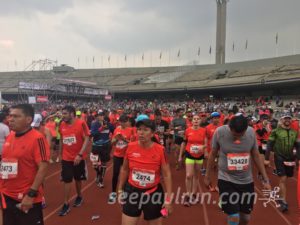
This was followed by the usual succession of corrals leading through stations where volunteers handed out medals, and exactly one Gatorade, one bottle of water, and one banana. After you’d picked up your loot, you were suddenly thrust into a jam-packed sea of people in an endless field– runners, family, and (why not?) the ever-present street vendors who had apparently been drawn by the scent of warm blood at the finish area to hawk all kinds of bootlegged Marathon-branded socks, coffee mugs, and trinkets.
It was then that the problem of runners needing to arrange their own transportation back into town became a daunting reality, and if my luck had been different, I might have spent hours searching for a way back among those crowded, unfamiliar streets. Fortunately, it took me only 15 minutes of walking around, tired and bewildered, before a cab driver miraculously pulled up and–seeming genuinely surprised by my request–agreed to drive me back into the city for the peso equivalent of roughly $45 USD. I was so grateful to have found any way back at all, I would have probably paid him double.


In the final analysis, there is probably no way to separate the fact that my feelings about the Mexico City Marathon mirror my feelings about Mexico City itself. Those feelings, while not negative, are definitely mixed and, as I said earlier, complicated. Both have elements that are nice, fun-loving, and inspiring, but both, unfortunately, lose those points due to issues that seem nonsensical, erratic, and needlessly chaotic.
And there was something else nagging me that I could not quite place my finger on until much later, and it was this: although this was my 52nd marathon, and my 25th in a foreign country, I often saw myself growing annoyed that the marathon organizers did not do anything to give international visitors a sense of feeling welcomed or, for that matter, of being particularly “cared for”.
While the everyday people in the street were friendly and supportive, much of the event, on the whole, was poorly executed on a fundamental level; none of the materials (save for the website), instructions, or announcements were in any language other than Spanish (much like the entire city, which incidentally does not sell a single English language newspaper in its international airport, despite the fact that statistically more than 80% of the city’s international tourists come from the U.S., Canada, and the U.K.).
From the shameless lack of toilet provisions on the course, to the chaotic and unhelpful expo and the baffling lack of communication by text or email from the organizers about their last-minute change of the race starting line, I got the sense that the planners of this so-called “international event” were caught off guard, perhaps failing to take seriously that there might actually be runners from foreign countries who would show up to participate!
 As I had already experienced how well so many races around the world were organized–most of which could never claim Mexico City’s own boasting of being among the world’s Top 10 marathons by number of runners–it seemed to me that the Mexico City Marathon in some ways is still most decidedly “un-international”.
As I had already experienced how well so many races around the world were organized–most of which could never claim Mexico City’s own boasting of being among the world’s Top 10 marathons by number of runners–it seemed to me that the Mexico City Marathon in some ways is still most decidedly “un-international”.
Instead, and rather like so much Mexico City itself, there seems to be more emphasis on the sheer number of people, and less on the quality of the event that those participants might experience.
In the end, I came away feeling that neither Mexico City nor its marathon is quite ready for the cosmopolitan limelight level they seek because they have perhaps not yet learned to stop being insular and parochial despite their recent re-emergence onto the world stage. And yet, I must admit that the marathon and the city are more extraordinary on the whole than the many frustrating sum of their parts.
Put another way, I guess I also realize that it’s unwise to bet against Mexico City and its future because in some ways it is the future of cities.
True, it’s not at all perfect. Rather, it’s a gargantuan work in progress, with as many success stories as failures to share. It’s also a crucible for learning to address urban problems on a scale larger than most of the world has ever known. I believe it will get better. I sense that it will evolve someday to become more welcoming and more global. And yes, I will probably go back again to check it out. With so many good things already in its favor, both the city, and its marathon for that matter, may need just a little more time, a little more organization, and a little broader perspective before more of us who are not from there can honestly say “I love it”.


____________________________________________________________________________________
THE DETAILS:
*3 days, 2 nights with late checkout on Sunday at 3:00 PM
(*I had been to the city before, but if this is your first time, you might want to make this a 4-5 day trip for museums and the historic sites, and maybe an extra day to see the ruins of Teotihuacan, which are about an hour’s drive away via an organized tour.)
Arrive: Friday morning
Leave: Sunday evening
Airline: Delta c/o Aeromexico
Hotel: Hotel Zócalo Central
http://www.centralhoteles.com/en/

Pros:
- Adjacent to the Zócalo (massive historic plaza in the center of city) and Cathedral; a few blocks from Starting Line;
- Rooms, by request, with views over Zócalo and of the Cathedral;
- Easy access to Subway station, Hop-on/Hop-off Bus, and Walking Tours across the street;
- Central Air Conditioning (which allowed me to keep windows closed at night to block out the busy activity in square and noise of morning Cathedral bells);
- Free Breakfast;
- Rooftop Restaurant overlooking Zócalo;
- Unlimited FREE water bottles (basically they had a glass fridge on every floor and you could take as many bottles as you wanted to your room for drinking, brushing teeth, washing hands etc.); apparently many elite marathoners were staying there and when the front desk heard that I was running the marathon that weekend, they sent me two complimentary bottles of Gatorade and granola/protein bars up to my room.
Cons:
- concierge services are a bit inept at requests for basic tourist information, transportation, and dining options in the area
Car Rental Necessary:
- NO! subways, taxis, and car services are fine, and unless you have a death wish, don’t even think about driving here.
Tours and Sights Not to Miss:
- Hop-on Hop-Off Bus (*not Turibus, which has many problems; but you might try Capital Bus, instead)
- Free 2.5 Walking Tour of the Zócalo, Cathedral, Aztec Ruins, etc.
http://www.estacionmexico.com.mx/home-ingl
- Self-guided Walking Tour through Polanco, Condesa, Zona Rosa, Garibaldi Square, and historic district
http://www.gpsmycity.com/tours/polanco-shopping-walk-155.html
http://www.gpsmycity.com/tours/condesa-and-roma-walk-175.html
http://www.gpsmycity.com/tours/exploring-zona-rosa–mexico-city-2085.htm
- National Palace
http://www.destination360.com/north-america/mexico/mexico-city/national-palace
- Chapultepec Castle
http://www.atlasobscura.com/places/chapultepec-castle
- Museum of Anthropology
Noteworthy Meals:
- Dinner 1 at the Gran Hotel (an elaborate Victorian hotel with a soaring Tiffany stained-glass ceilinged lobby) in their rooftop restaurant with Zócalo views beautifully lit up at night (meal consists of safe to eat salad, soup, and desert bar that comes along with your order of massive grilled steaks or fish you choose beforehand; not a tourist trap, from what I could tell.)
https://granhoteldelaciudaddemexico.com.mx/


View from (r) and Lobby of (l) the Gran Hotel overlooking the main square, El Zócalo.
- Pasta Dinner/Night before marathon: Nonsolo Italian Cantina – simple, open café with decent pasta, wine, and beer
Books /Audiobooks for Background:
- Down and Delirious in Mexico City: The Aztec Metropolis in the Twenty-First Century, by Daniel Henandez
https://www.amazon.com/Down-Delirious-Mexico-City-Twenty-First/dp/1416577033
- The Interior Circuit: A Mexico City Chronicle, by Francisco Goldman
https://www.amazon.com/Interior-Circuit-Mexico-City-Chronicle/dp/B00QSFY2IM
- First Stop in the New World: Mexico City, the Capital of the 21st Century, by David Lida
https://www.amazon.com/First-Stop-New-World-Capital/dp/1594483787









































